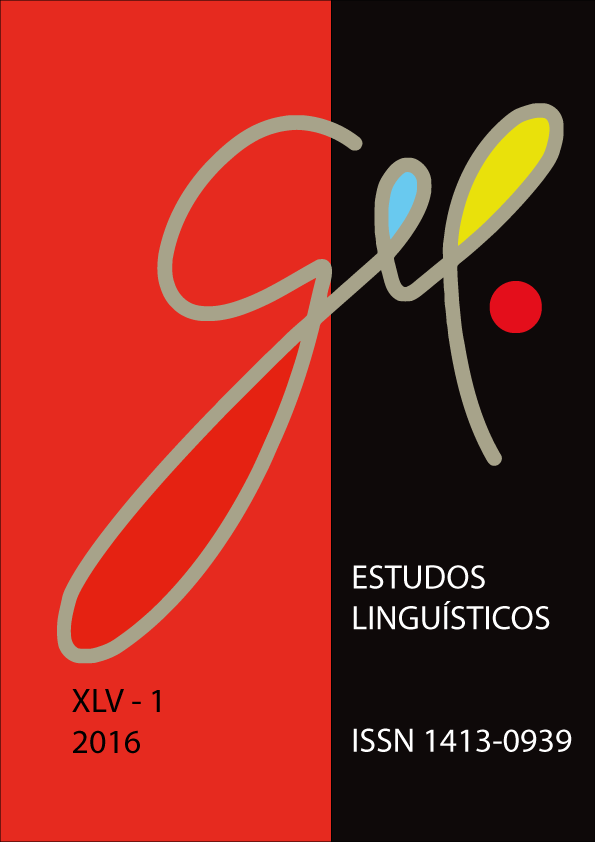Natural languages as complex adaptive systems
DOI :
https://doi.org/10.21165/el.v45i1.787Mots-clés :
complex systems, linguistics, adaptation, sociolinguistic variation.Résumé
Certain basic properties of complex systems are compared to those of communal languages. It is argued that languages are comprised of interacting units that constitute a functioning whole, with the properties of network structure, decentralized control, emergence, reciprocal causation, far-from-equilibrium state, and positive and negative feedback processes. The possibility that languages also have the property of adaptivity is also discussed. The key problem in defining language adaptivity is found to be the role played by individual linguistic variation in maintaining a language’s stability and capacity for change. It is argued in conclusion that considering natural languages as complex adaptive systems serves as a basis for hypotheses that can be modeled and tested empirically, and that the complex systems approach can bring a unity and coherence to the understanding of diverse linguistic phenomena.
Téléchargements
Références
ARONOFF, M.; MEIR, I.; PADDEN, C.; SANDLER, W. Open peer commentary: lan-guage is shaped by the body. Behavioral and brain sciences, v. 31, n. 5, p. 509-511, 2008.
BECKNER, C.; BLYTHE, R.; BYBEE, J.; CHRISTIANSEN, M. H.; CROFT, W.; ELLIS, N. C.; HOLLAND, J.; KE, J.; LARSEN-FREEMAN, D.; SCHOENEMANN, T. Language is a complex adaptive system: position paper. Language Learning, v. 59, s. 1, p. 1-26, 2009.
BERNÁRDEZ, E. Collective cognition and individual activity: variation, language and culture. In: FRANK, R. M. et al. (eds.). Body, Language and Mind. v. 2. Berlin: Mouton de Gruyter, 2008. p. 137-166.
BOECKX, C. Elementary Syntactic Structures. Cambridge: Cambridge University, 2014. 222 p.
CHOMSKY, N. Knowledge of Language: Its Nature, Origin, and Use. New York: Praeger, 1986. 307 p.
CHRISTIANSEN, M. H.; CHATER, N. Language as shaped by the brain. Behavioral and brain sciences, v. 31, n. 5, p. 489-509, 2008.
CROFT, W. Grammar: functional approaches. n. d. Available at: <http://www.unm.edu/~wcroft/Papers/Functionalism-IESBS2ed.pdf>. Accessed on: 4 Oct. 2015.
CROFT, W. Explaining Language Change. Harlow: Longman, 2000. 287 p.
DE BOT, K.; LOWIE, W.; THORNE, S. L.; VERSPOOR, M. Dynamic systems theory as a comprehensive theory of second language development. In: MAYO, M. et al. (eds.). Contemporary Approaches to Second Language Acquisition. Amsterdam: John Benjamins, 2013. p. 199-220.
DE BOT, K. The end of psycholinguistics as we know it? It’s about time! In: JUDIT, N. et al. (eds.). Mentális folyamatok a nyelvi feldolgozásban (Mental Procedures in Lan-guage Processing). Budapest: Tinta Könyvkiadó, 2012. p. 10-19.
EASLEY, D., KLEINBERG, J. Networks, Crowds, and Markets. Cambridge: Cam-bridge University, 2010. 744 p.
EHALA, M. Self-organization and language change. Diachronica, v. 13, n. 1, p. 1-28, 1996.
FAGYAL, Z.; SWARUP, S.; ESCOBAR, A. M.; GASSER, L.; LAKKARAJU, K. Centers, peripheries, and popularity: the emergence of norms in simulated networks of linguistic influence. University of Pennsylvania Working Papers in Linguistics, v. 15, n. 2, p. 81-90, 2010.
FRAN, R. M.; GONTIER, N. On constructing a research model for historical cognitive linguistics (HCL): some theoretical considerations. In: WINTERS, M. E. et al. (eds.). Historical Cognitive Linguistics. Berlin: Walter de Gruyter, 2010. p. 31-69.
HEYLIGHEN, F. The science of self-organization and adaptivity. In: Encyclopedia of Life Support Systems. v. 5. Paris: EOLSS Publishers, 2001. p. 253-280.
HEYLIGHEN, F. Complexity and Self-Organization. In: BATES, M. et al. (eds.). Encyclopedia of Library and Information Sciences. New York: Taylor & Francis, 2009. p. 1215-1224.
JAKOBSON, R. On language. Cambridge: Harvard, 1990. 560 p.
KELLER, R. On Language Change: The Invisible Hand in Language. London: Routledge, 1994. 196 p.
KÖHLER, R.; ALTMANN, G. Aims and methods of quantitative linguistics. In: ALTMANN, G. et al. (eds.). Problems of Quantitative linguistics. Černivci: Ruta, 2005. p. 12-41.
KÖHLER, R. Synergetic linguistics. In: KÖHLER, R. et al. (eds.). Quantitative Linguistik/Quantitative linguistics: ein internationales Handbuch/an international handbook. Berlin: Walter de Gruyter, 2005. p. 760-774.
KRETZSCHMAR, W. A. The Linguistics of Speech. Cambridge: Cambridge University, 2009. 296 p.
KRETZSCHMAR, W. A. Language and Complex Systems. Cambridge: Cambridge University, 2015. 242 p.
LABOV, W. Principles of Linguistic Change. v. 2. Social Factors. Oxford: Blackwell, 2001. 592 p.
LARSEN-FREEMAN, D.; CAMERON, L. Complex Systems and Applied Linguistics. Oxford: Oxford University, 2008. 287 p.
MAC WHINNEY, B.; O’GRADY, W. (eds.). The Handbook of Language Emergence. Oxford: Wiley-Blackwell, 2015. 656 p.
MINNETT, J. W.; WANG, W. S. Modelling endangered languages: the effects of bilin-gualism and social structure, Lingua, v. 118, n. 1, p. 19-45, 2008.
MUFWENE, S. The Ecology of Language Evolution. Cambridge: Cambridge Universi-ty, 2001. 276 p.
MÜHLENBERND, R.; QUINLEY, J. Signaling and simulations in sociolinguistics. University of Pennsylvania Working Papers in Linguistics, v. 19, n. 1, p. 129-138, 2013.
NARANAN, S.; BALASUBRAHMANYAN, V. Power laws in statistics and related systems. In: KÖHLER, R. et al. (eds.). Quantitative Linguistik/Quantitative linguistics: ein internationales Handbuch/an international handbook. Berlin: Walter de Gruyter, 2005. p. 716-738.
RACZASZEK-LEONARDI, J. Multiple systems and multiple time scales of language dynamics: coping with complexity. Cybernetics and Human Knowing, v. 21, n. 1-2, p. 37-52, 2014.
SAMPSON, G.; GIL, D.; TRUDGILL, P. (eds.). Language Complexity as an Evolving Variable. Oxford: Oxford University, 2009. 336 p.
SAUSSURE, F. Course in General Linguistics. Chicago: Open Court, 1986. 236 p.
WEDEL, A. Self-organization in phonology. In: VAN OOSTENDORP, M. et al. (eds.). The Blackwell Companion to Phonology: Suprasegmental and Prosodic Phonology. Ox-ford: Wiley-Blackwell, 2011. p. 130-147.
WILDGEN, W.; BRANDT, P. (eds.). Semiosis and Catastrophes: René Thom's Semiot-ic Heritage. Bern: Peter Lang, 2010. 185 p.
ZUIDEMA, W.; DE BOER, B. Modelling in the language sciences. In: PODESVA, R. et al. (eds.). Research Methods in Linguistics. Cambridge: Cambridge University, 2013. p. 422-439.



